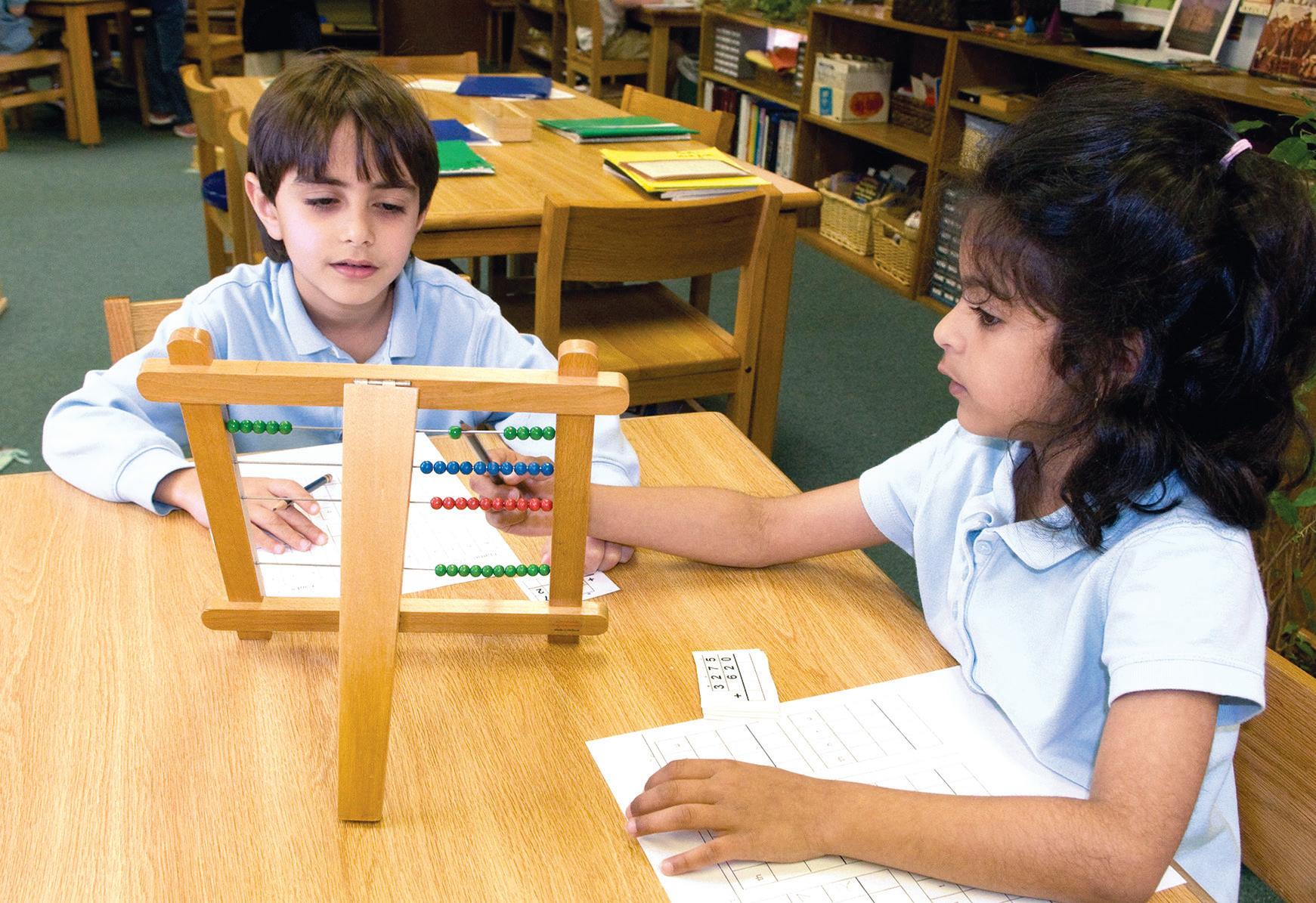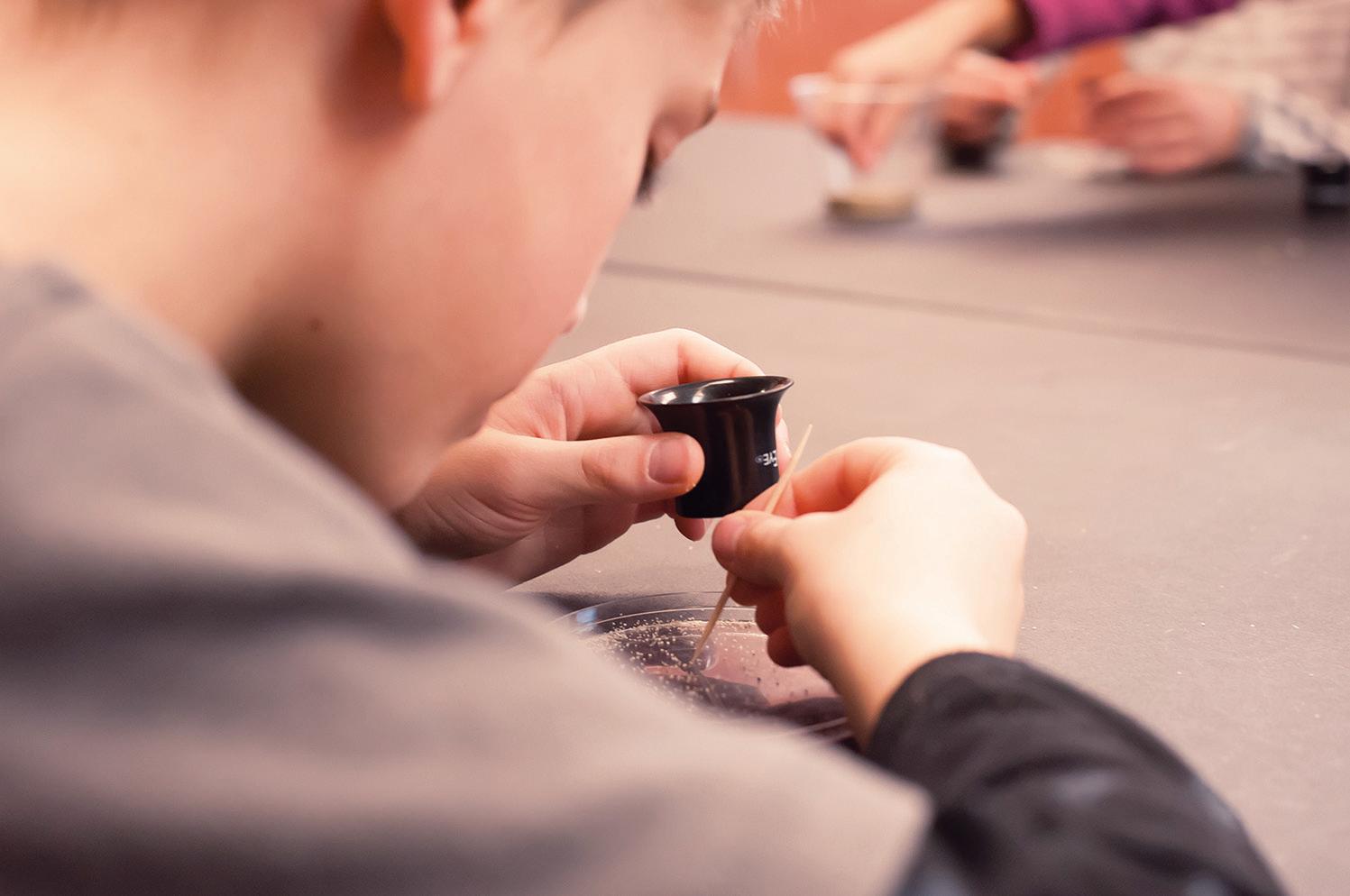
6 minute read
History, Geography & Cultural Studies

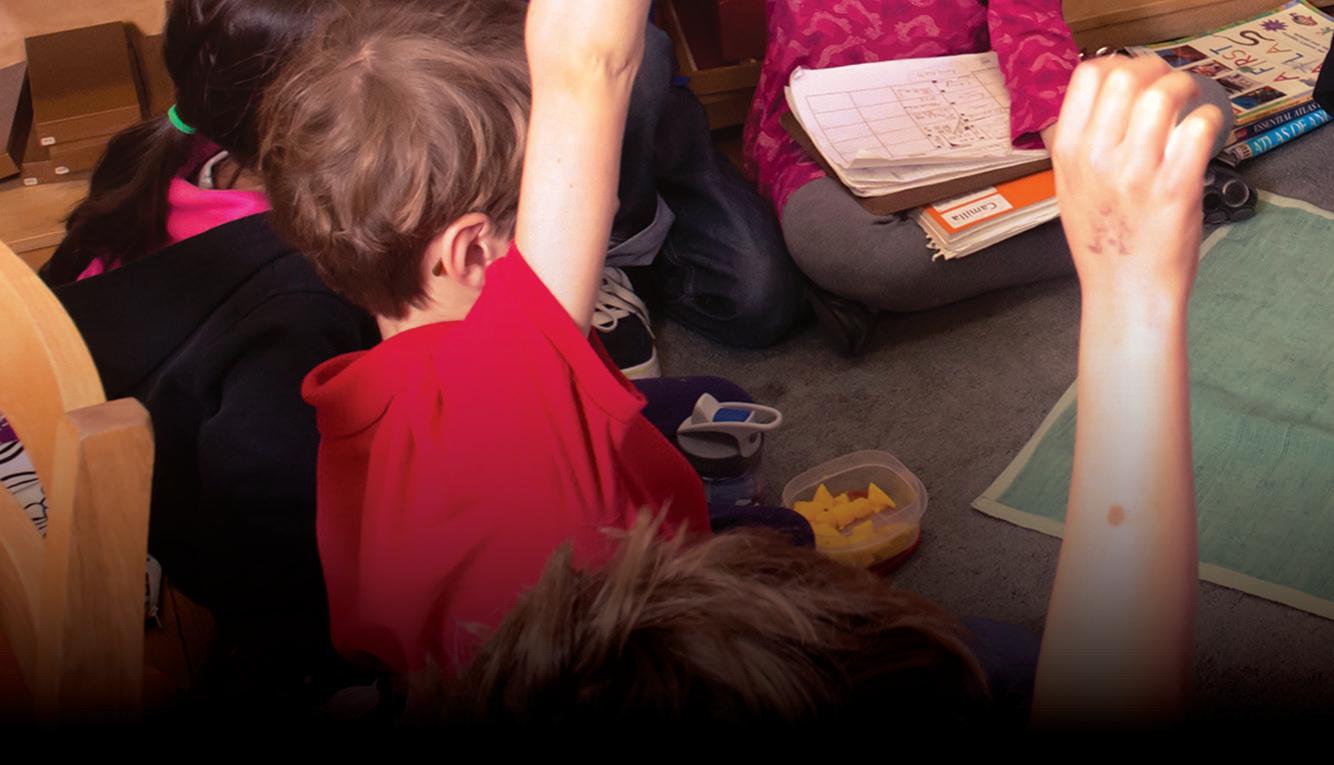

e are all members of the human family. Our roots lie in the distant past, and history is the story of our common heritage. Without a strong sense of history, we cannot begin to know who we are as individuals today. Our goal is to develop a global perspective, and the study of history and world cultures forms the cornerstone of the Montessori curriculum.
With this goal in mind, Montessori teaches history and world cultures starting as early as age three. e youngest students work with specially designed maps and begin to learn the names of the world’s continents and countries.
Physical geography begins in the rst grade with a study of the formation of the Earth, the emergence of the oceans and atmosphere, and the evolution of life. Students learn about the world’s rivers, lakes, deserts, mountain ranges, and natural resources.
Montessori’s integrated thematic curriculum allows a broad scope of study in the areas of history, geography, and cultural studies. e children also study the emergence of human beings during the old and new stone ages, the development of the rst civilizations, and the universal needs common to all humanity. For older elementary students, the focus is respectively on early man, ancient civilizations, and early-American history (or the early history of the many other countries in which Montessori schools are found).
Montessori tries to present a sense of living history at every level through direct handson experiences. Students build models of ancient tools and structures, prepare their own manuscripts, make ceremonial masks, and recreate all sorts of artifacts of everyday life of historical eras. Experiences such as these make it much easier for Montessori children to appreciate history as it is taught through books.
While Montessori schools are communities apart from the outside world, in which children can rst begin to develop their unique talents, they are also consciously connected to the local, national, and global communities. e goal is to lead each student to explore, understand, and grow into full and active membership in the adult world. Field trips provide opportunities to explore the world outside the classroom. Younger elementary children often use simpli ed research card material and charts in their studies.

above The Pin Maps challenge the children to begin to master the names of the countries, capital cities, and fl ags of the countries of several continents. Each label is printed on a card attached to a thin pin, which is placed in the appropriate hole on the map. A set of control charts allows the children to check their own work.
The Big Bang
The Big Bang History begins with the “Big Bang” and the formation of the universe and, within it, of our solar system. Children start with the story of how the world began, how it began to cool, the formation of the atmosphere and oceans, and the emergence of life. They study the story of life on Earth up through the geological eras to the last ice ages and the emergence of the earliest humans.
right This elementary Montessori guide dramatized the concept of the Big Bang theory of the formation of the universe by fi lling this black balloon with glitter, lowering the lights, telling the story, and at the right moment, popping the balloon with the pointed stick. Look at the expression on the children's faces. That was a lesson that they will remember. The Cosmic Curriculum is intended to create a sense of wonder and plant seeds of curiosity and engagement. left A lower-elementary student at work with the Time Line of Life on the Earth. The children also study the emergence of the fi rst civilizations and the universal needs common to all humanity. For older elementary students, the focus is respectively on early humans, ancient civilizations, and earlyAmerican history (in the USA).


below Birthdays are celebrated by a walk around the sun holding a globe of the Earth to mark each year of the child’s life.
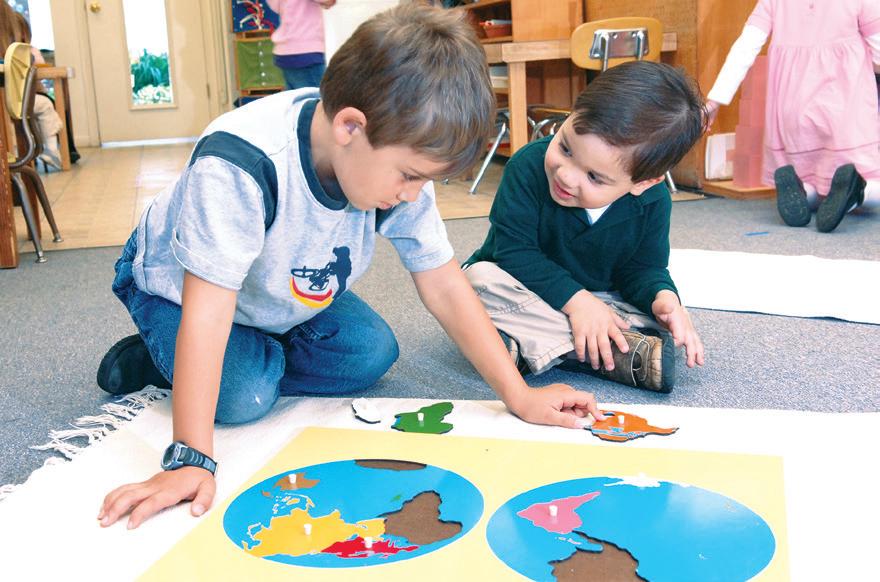
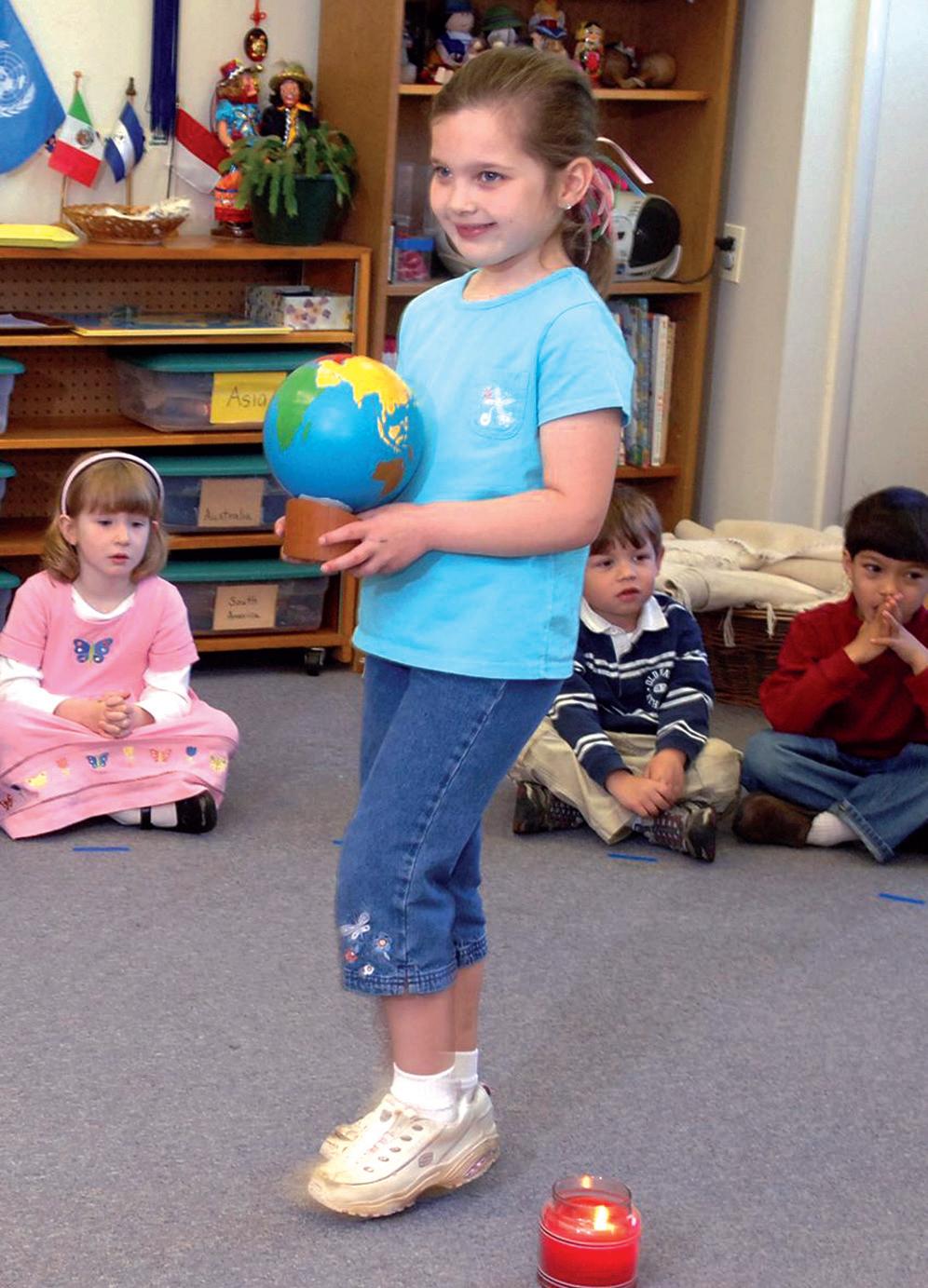
Globes and Puzzle Maps
The Teaching Clock
left & above These two special globes are used to introduce physical geography. The fi rst is used to teach the idea of how land areas and water are represented on a Globe. Land is shown as rough brown area; water is smooth blue surface areas. The second introduces the seven continents. Each is shown in a distinct color. Children learn the names and location of each continent. The color code used on the Continent Globe is carried on with the Puzzle Map of the World and in early work in continent studies.
right The Teaching Clock (above) Before a child can begin to understand history, she needs to begin to grasp the concept of time. The child pictured above is learning to tell time, along with the other concepts of the passage of time, such as: How long is a minute, an hour, a day, a year? How old are the people that I know?
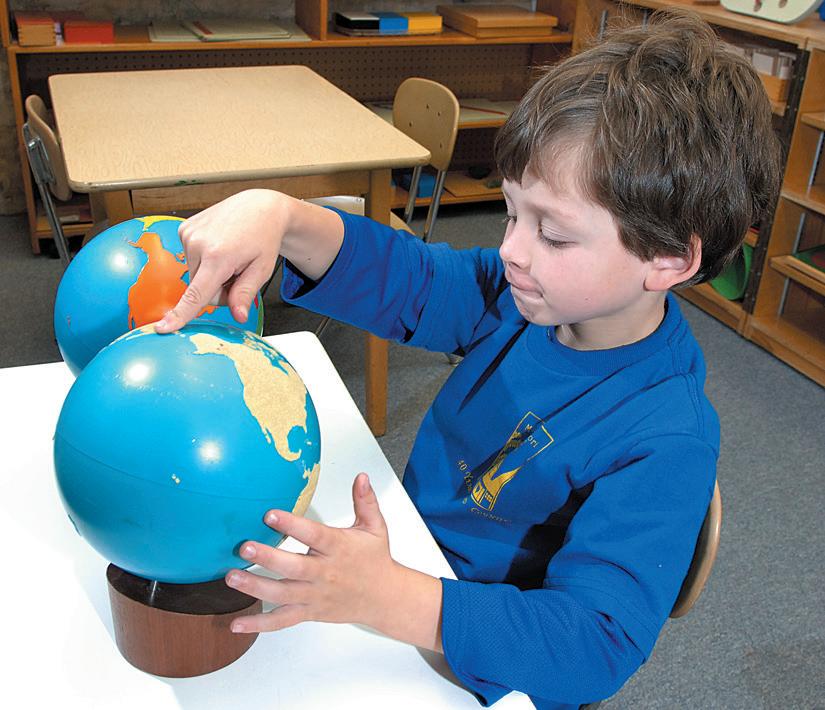
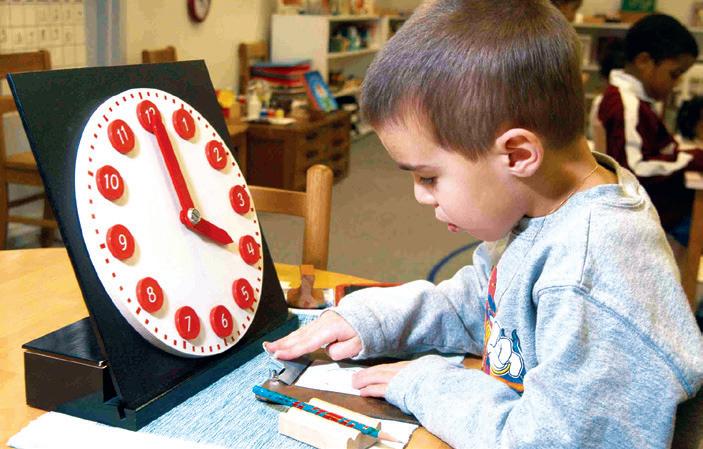

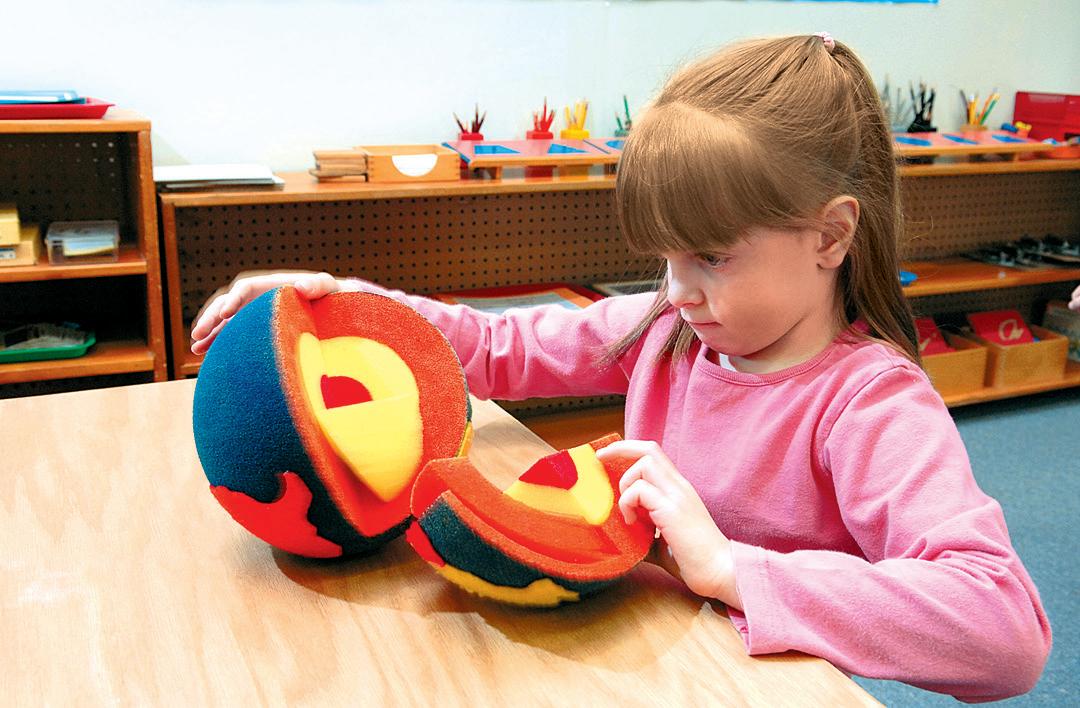
This young lady is working with a model of the inner core of the Earth.
The Land & Water Forms
Cultural Studies
above These students are working with the Land and Water Forms, a set of three dimensional models that represent, in very simple terms, the nature of basic geographic features. This is also a pouring exercise, as the child adds water to the tray to create a higher level of sensory impression. Here she explores the idea that an island is a body of land surrounded by water, while a lake is a body of water surrounded on all sides by land.
The children learn to name each form, match the model with a photo of a real lake or island, place the correctly printed label underneath each form, then prepare their own labels. They also learn the defi nitions of each land form, continue to learn about the largest lakes or islands in the world, and research facts about specifi c places.
The fi rst set includes such geographic forms as an isthmus, peninsula, cape, bay, and strait. Advanced exercises introduce more complex geographic features, such as mountains, mountain ranges, volcanoes, archipelagos, foothills, cliffs, mesas, prairies, river valleys, and river deltas. above This student is working with materials to reinforce the concept of seasons and the rotation of the Earth.
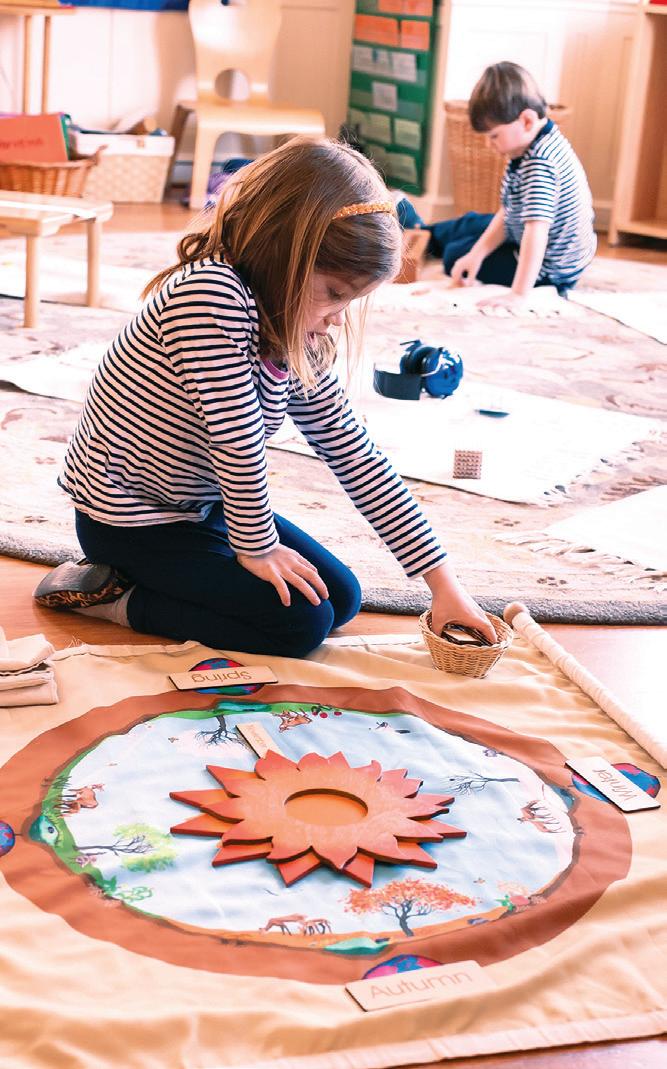
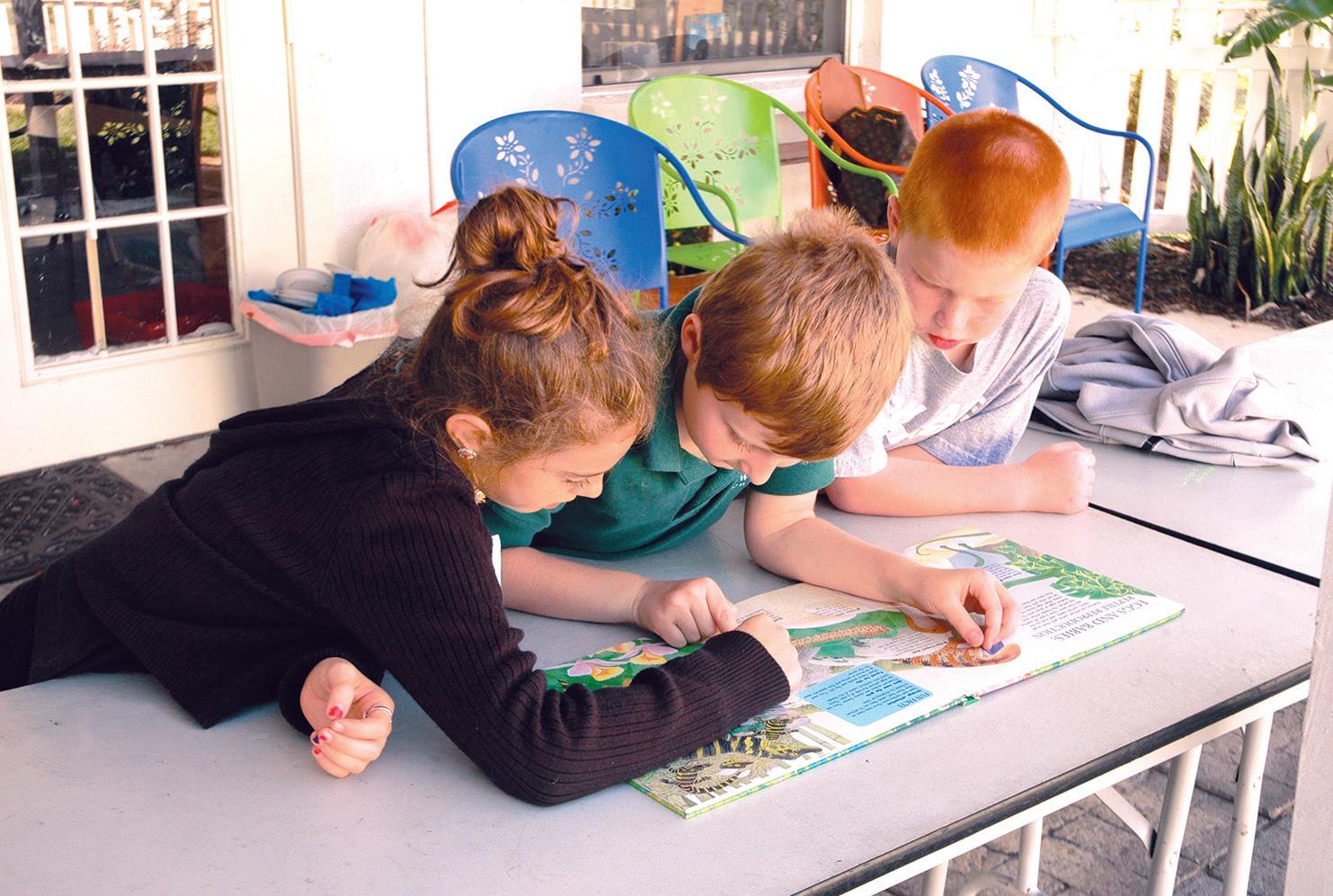
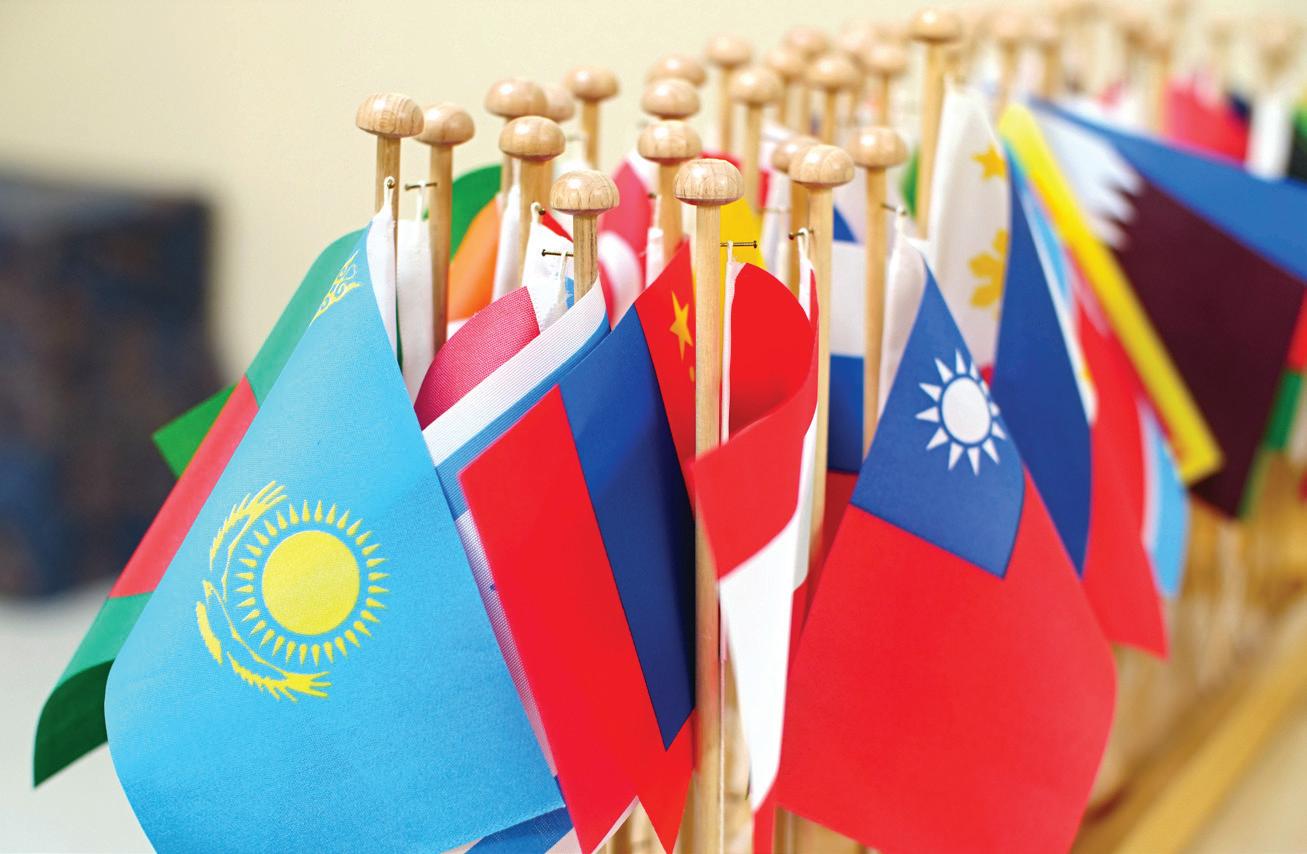
Cultural studies continue at every age level in Montessori education. The curriculum integrates art, music, dance, cooking, geography, literature, and science. Children learn to prepare and enjoy dishes from all over the world.
They learn traditional folk songs and dances in music and explore folk crafts in art. In Language Arts, they read the traditional folk tales and research and prepare reports about the countries they are studying that year. Units of study often culminate in marvelous international holidays and festivals that serve as the high points of the school year.


